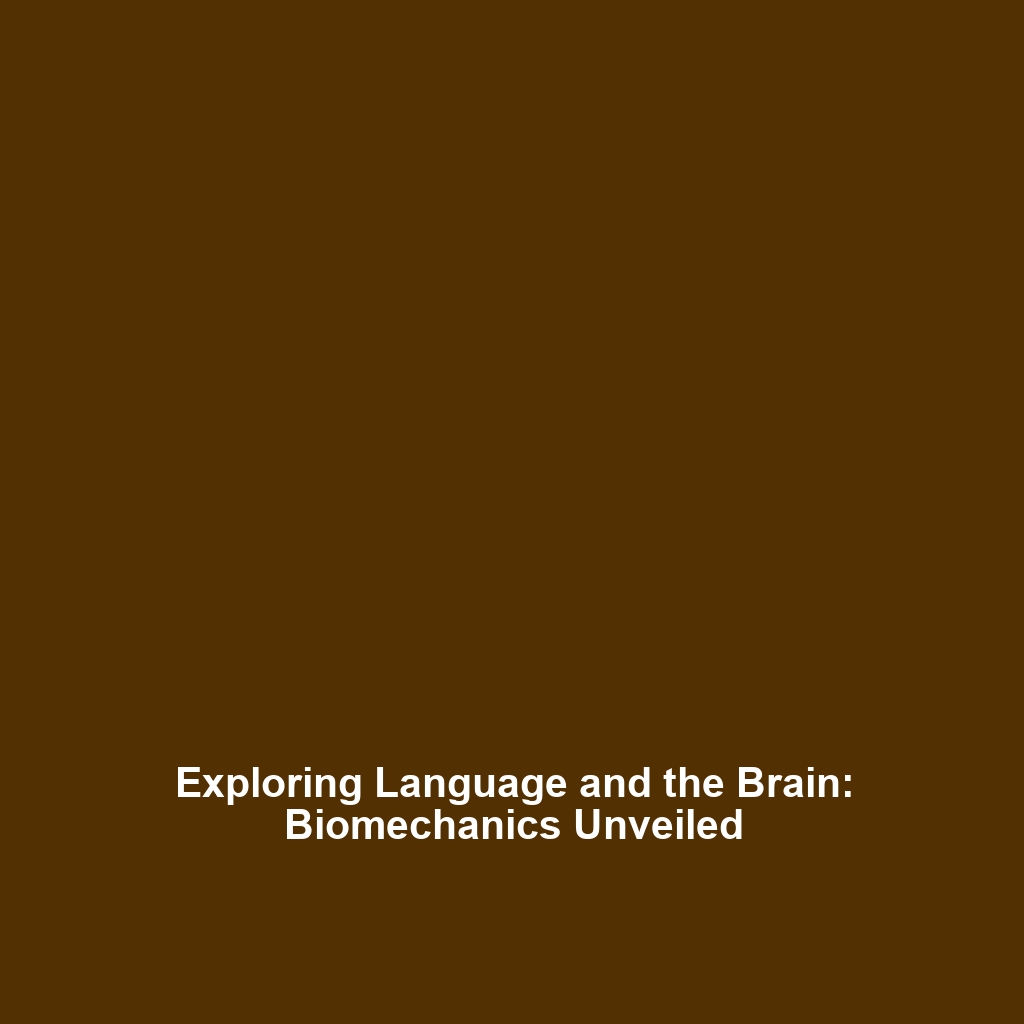Introduction to Neuroscience in the Context of Biomechanics
Neuroscience plays a crucial role in understanding the complexities of human movement and the underlying mechanisms that drive biomechanics. By exploring how the nervous system interacts with the musculoskeletal system, researchers can develop improved methodologies for movement analysis, rehabilitation, and sports performance enhancement. This article delves into the key concepts, applications, current challenges, and future innovations related to this fascinating intersection of neuroscience and biomechanics, highlighting its significance in various scientific domains.
Key Concepts in Neuroscience
Understanding neuroscience requires a grasp of several key concepts that are foundational to its study. In the context of biomechanics, these include:
- Neuroplasticity: The brain’s ability to reorganize and form new neural connections throughout life, impacting motor learning and rehabilitation practices.
- Motor Control: The process by which the brain coordinates muscle actions to produce movement, essential for maintaining balance and executing complex physical tasks.
- Sensorimotor Integration: The integration of sensory input and motor output, which is crucial for executing smooth and coordinated movements.
Overall, neuroscience elucidates how cognitive functions influence biomechanics, allowing for a more holistic understanding of human movement and performance.
Applications and Real-World Uses
Neuroscience has practical applications across various fields within biomechanics. Some notable examples include:
- Rehabilitation: Techniques that utilize neuro-motor training to recover function post-injury.
- Sports Performance: Use of neuroscience to enhance athletes’ technique and optimize performance through mental training and focus.
- Ergonomics: Designing workplace tools and environments that align with human biomechanics and enhance productivity while minimizing injury risk.
These applications illustrate how neuroscience is effectively used in biomechanics to improve health outcomes and athletic performance.
Current Challenges in Neuroscience
While the integration of neuroscience and biomechanics offers valuable insights, several challenges remain:
- Complexity of Neural Responses: Individual variability in neural responses complicates the application of findings across diverse populations.
- Technological Limitations: The need for advanced imaging and analysis tools to accurately assess neural and muscular interactions.
- Interdisciplinary Knowledge Gaps: Bridging the gap between neuroscientists and biomechanics experts to foster collaborative research.
Future Research and Innovations
Future research in neuroscience will likely focus on several key innovations that could significantly impact biomechanics, including:
- Brain-Computer Interfaces: Developing technologies that allow for direct communication between the brain and external devices.
- Wearable Technology: Enhanced sensors to monitor neurophysiological activity during physical activities.
- Augmented Reality Training Tools: Integrating AR to improve motor learning through visual cues and feedback.
These innovations promise to revolutionize the field of biomechanics by offering new methods for assessment and intervention.
Conclusion
Neuroscience is an integral component of biomechanics, providing essential insights into how our nervous system influences movement and performance. Understanding the principles of neuroscience can enhance rehabilitation, improve athletic performance, and foster advancements in ergonomics. As research progresses and innovations emerge, the synergy between these two fields will continue to grow, offering exciting opportunities for exploration and application. For those interested in furthering their knowledge, consider exploring our sections on rehabilitation techniques and sports performance optimization.
